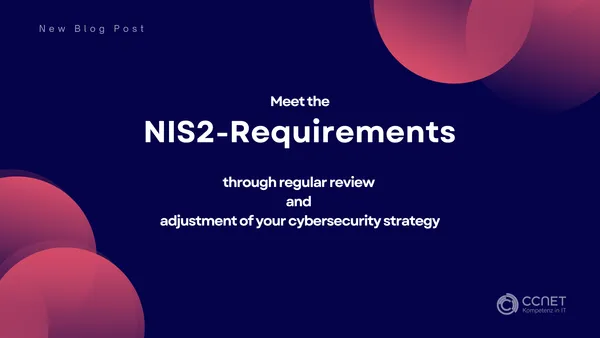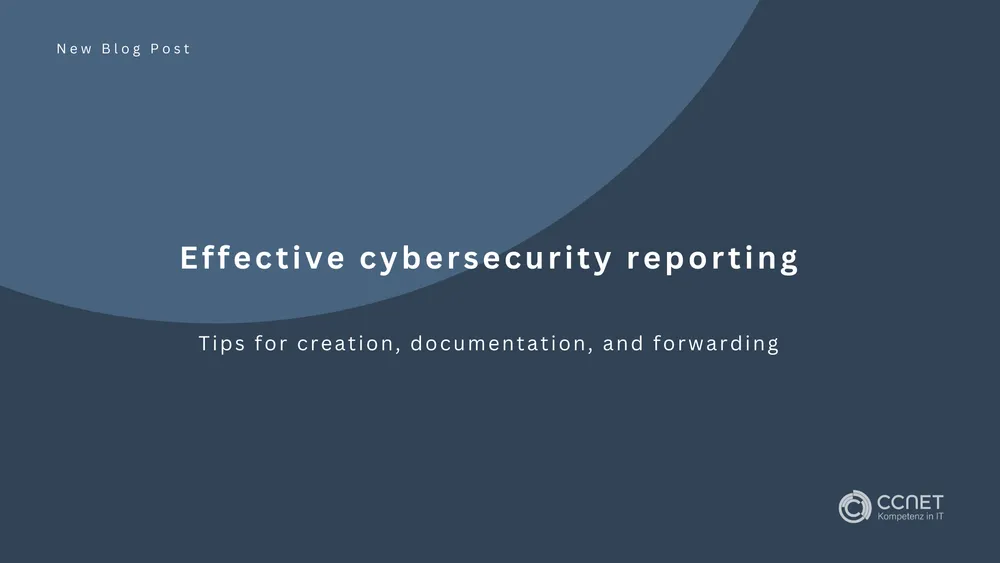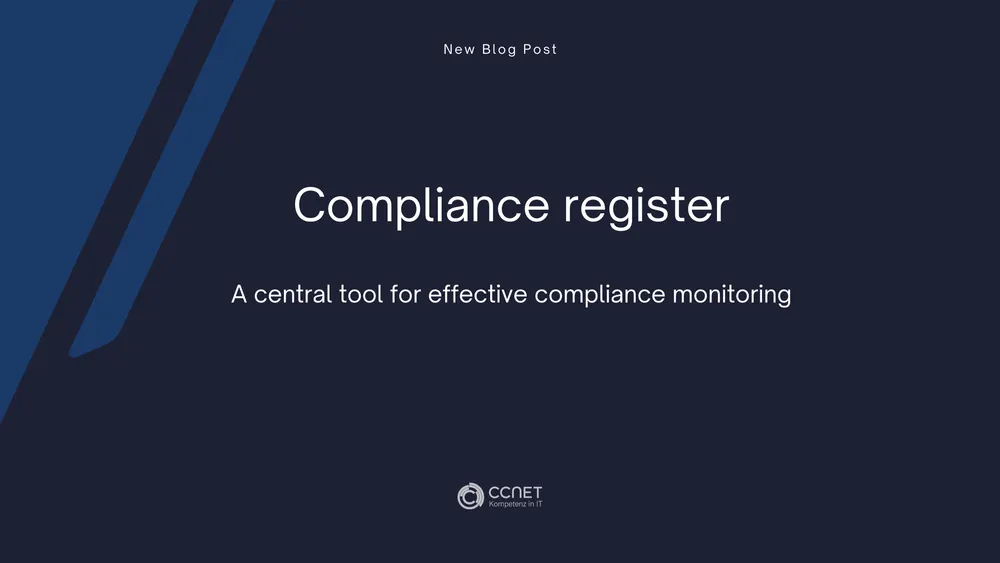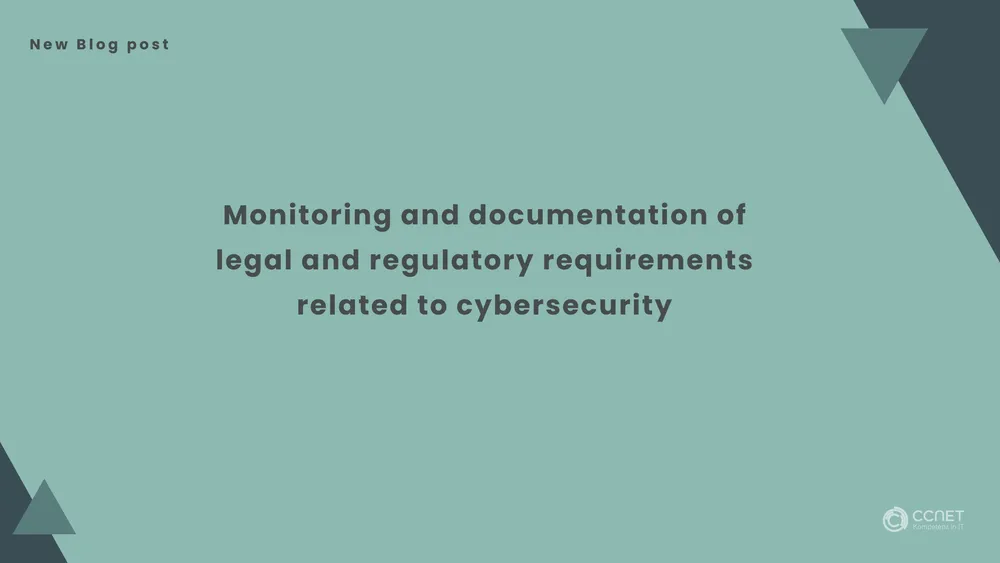
CCNet
Jan 22, 2025 • 3 min read

Meet the NIS2-Requirements through regular review and adjustment of your cybersecurity strategy
Meet NIS2 Requirements by Regularly Reviewing and Adjusting Your Cybersecurity Strategy
A well-thought-out and clearly defined emergency management plan for cybersecurity incidents is crucial to minimizing the impact of a potential cyberattack and ensuring business continuity. Companies must ensure that their emergency plans are regularly reviewed and adapted to new threats to meet the requirements of the NIS2 Directive. Such a plan offers a structured approach to being prepared for cyber incidents and ensures that systems and data can be quickly restored.
A Flexible, Continuously Improving Security Strategy
An emergency plan is only effective if it remains flexible and is continuously adapted to the changing threat landscape and technological developments. The NIS2 Directive requires companies to dynamically respond to new challenges and proactively take measures to protect their systems.
How to Implement It: The Process for Creating and Updating an Emergency Plan
An effective emergency plan to respond to cybersecurity incidents should include several key steps to ensure that all contingencies are covered and that quick and coordinated actions are possible.
- Initiating the Emergency Plan: Schedule Regular Reviews and Tests
The emergency plan must be reviewed at least once a year and tested through simulated exercises to ensure its effectiveness. This ensures that the Incident Response Team (IRT) is always ready for deployment. For example, a simulation targeting a ransomware attack could be conducted in the first quarter to test response speed and efficiency.
- Tip: Immediately adapt the emergency plan when there are significant changes in the threat landscape or after a real incident. Flexibility is key here.
- Gathering and Analyzing Information: Continuous Monitoring and Threat Detection
A SIEM system (Security Information and Event Management) should be used continuously to detect suspicious activities early. When a confirmed incident occurs, the Incident Response Team is activated, and the collected data is analyzed to assess the extent of the incident and initiate immediate actions.
- Tip: Use automated systems for threat detection and analysis to respond to incidents quickly.
- Incident Assessment and Containment: Quick Response to Threats
Once an incident is detected, it is assessed by the Incident Response Team, and containment measures are initiated. This may include isolating affected systems or deactivating vulnerable services.
- Tip: Prioritize the security of the entire network by taking immediate steps for containment while simultaneously conducting an analysis of the incident.
- Approval and Implementation of Corrective Actions: Ensuring Coordinated Response
After an incident is contained, the corrective and recovery measures are approved by management. This includes restoring systems through backups and closing the security gaps that led to the incident.
- Tip: Clear communication between the Incident Response Team and management ensures that actions are quickly approved and implemented.
- Communication: Transparent Information Dissemination Internally and Externally
All affected departments, as well as external parties such as customers or partners, must be promptly informed about the incident and the measures taken. The communications lead of the Incident Response Team plays a central role here.
- Tip: Clear and transparent communication helps maintain trust and ensures that all stakeholders are informed about the incident.
- Documentation and Archiving: Ensuring Complete Traceability
Each incident must be comprehensively documented and archived. This documentation serves not only for internal traceability but also as proof to regulatory authorities in compliance with NIS2 requirements.
- Tip: Ensure complete logging of all incidents and actions. This facilitates follow-up and adjustments to the emergency plan for future incidents.
- Follow-Up and Analysis: Learning from Incidents
After each incident, a full analysis is conducted to gain insights and adjust the emergency plan accordingly. This follow-up is crucial for avoiding future incidents and continuously improving the plan.
- Tip: Use past incidents as opportunities to improve and fine-tune your response processes.
Conclusion: Proactive Control of the Cybersecurity Strategy Through a Robust Emergency Plan
A well-thought-out and regularly updated emergency plan is a key component of an effective cybersecurity strategy. It not only ensures compliance with the NIS2 requirements but also guarantees the security of IT infrastructure and business continuity in the event of a cyberattack.
By continuously adapting and regularly reviewing the plan, your company remains compliant with NIS2 requirements and is proactively prepared for new threats. Such a plan builds trust and provides the necessary security to keep operations running safely.


